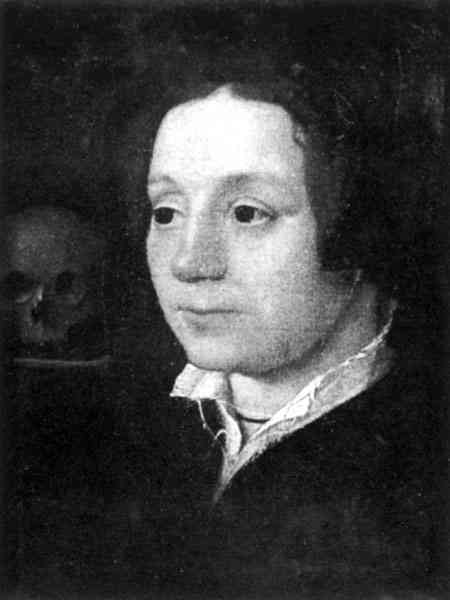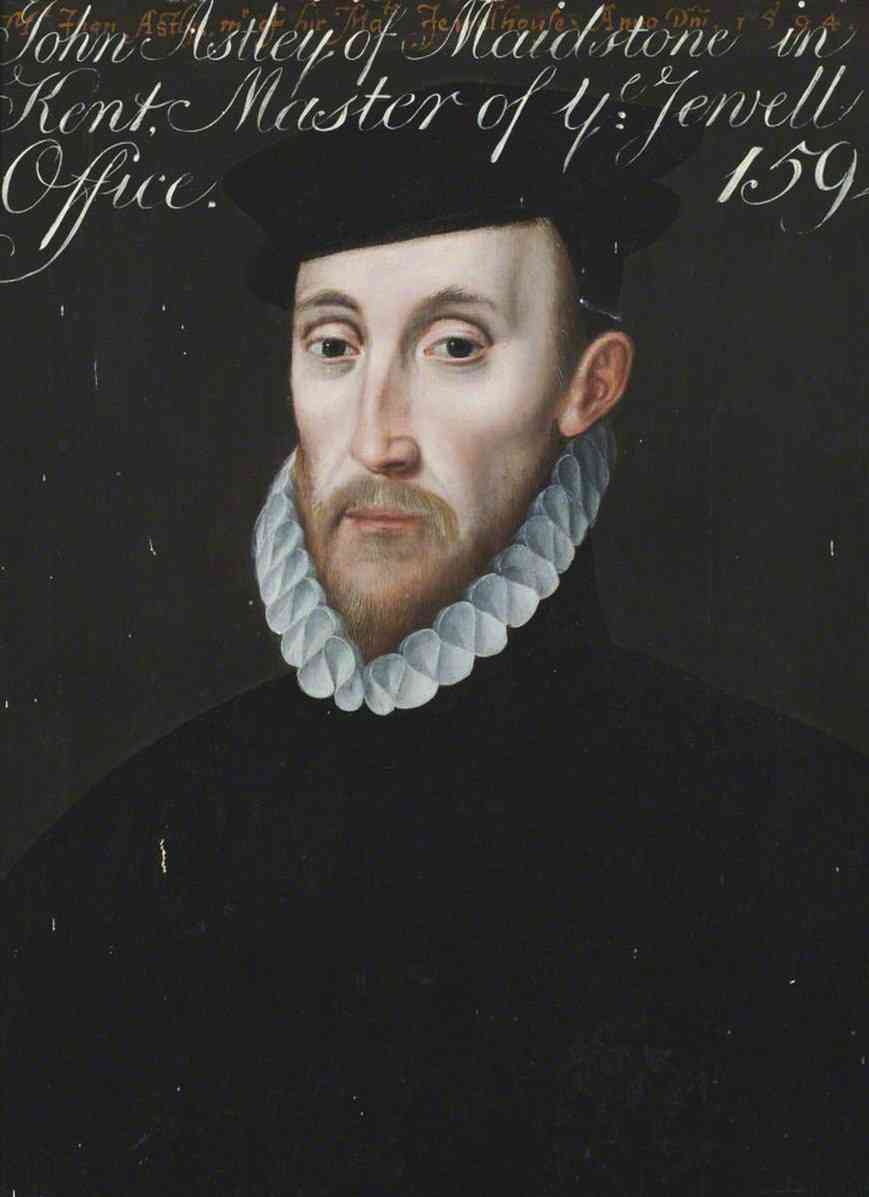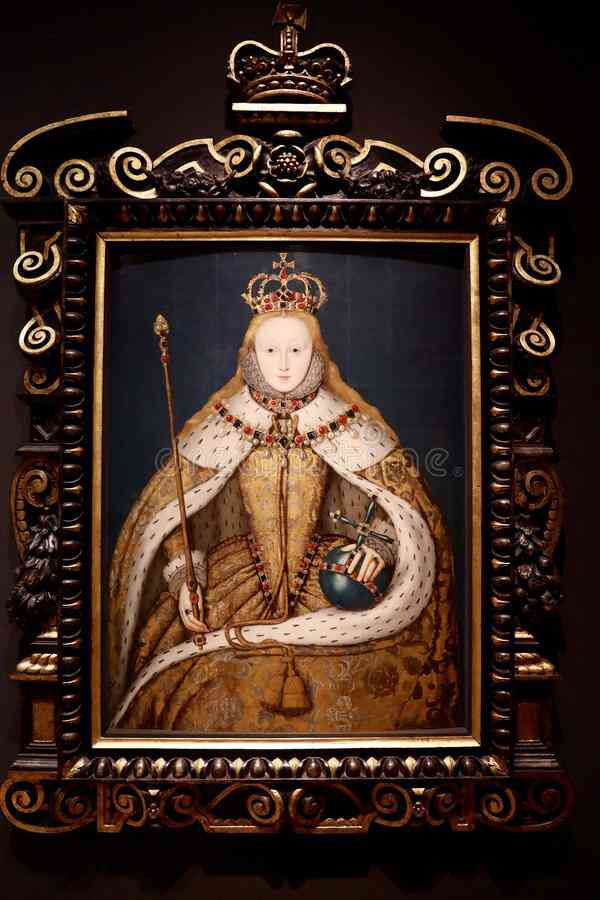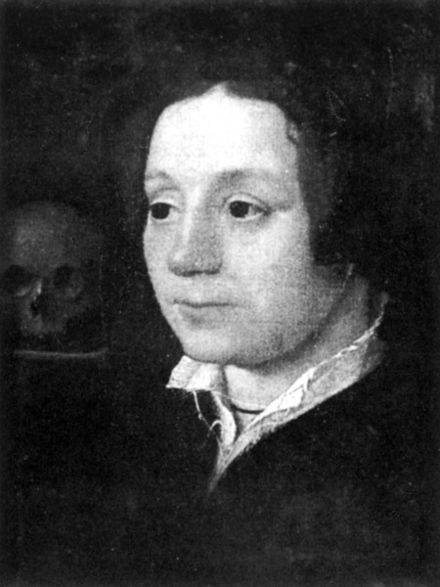
Who was the other Katherine Champernowne? Who was Kat Ashley?

(Portrait sourced via Wikimedia commons from the collection of Lord Hastings - thought to be Kat Champernowne/Ashley (Astley).)
It’s well known that a woman named Katherine Champernowne, later the wife of John Ashley (Astley), was governess for the future Queen Elizabeth I. Many people recognise her as ‘Kat’, although those closest to her may have actually called her Kate. I have therefore continued to use Kat, both here and in my novel A Woman of Noble Wit, the story of another woman named Katherine Champernowne who was Sir Wlater Raleigh’s mother.
We know surprisingly little about Kat’s early life.It has even proved difficult to identify exactly who her parents were. People often thought that Kat and the ‘other’ Katherine Champernowne were aunt and niece. In this article, I explain why I have reached the conclusion, shared by recent scholars, that Kat and Katherine were actually sisters.
What is known...
Kat does not make her first appearance in the known historical record until 1536. Shortly after Anne Boleyn's execution, a number of women were appointed to serve Anne's daughter, who was to be known as "the Lady Elizabeth, the King's daughter". One of those women is named as "Katheryne Champernowne". She would serve alongside, amongst others, Mary Norice (Noriss, Norreys), who would later marry Sir George Carew, a cousin of the Champernownes of Modbury. After George lost his life on the Mary Rose in 1545, Mary took as her second husband Sir Arthur Champernowne, brother of Kat and Katherine, the first of that name at Dartington Hall. Blanche ap Harry (Blanche Parry) was also appointed to serve lady Elizabeth and continued to do so until she (Blanche) died in 1590.
After the birth of Edward VI in 1537, Lady Bryan, Elizabeth's first governess, was moved to look after the prince. Kat was then promoted to have charge of Elizabeth’s early education. It seems she did a very good job. When William Grindal became Elizabeth’s tutor in1544 he wrote to Kat expressing his astonishment and gratitude for her achievements.
“’Would God my wit wist (knew) what words would express the thanks you have deserved of all true English hearts, for that noble imp (Elizabeth) by your labour and wisdom now flourishing in all goodly godliness, the fruit whereof doth even now redound to her Grace’s high honour and profit. I wish her Grace to come to that end in perfectness with likelyhood of her wit, and painfulness in her study... which your diligent overseeing doth most constantly promise.’
Kat taught Elizabeth reading and writing, the required code of politeness and respect for her elders, and all those skills a well-born girl needed to display if she was to secure a suitable marriage and run a sizable household. It‘s also said that Kat introduced Elizabeth to mathematics, geography, astronomy, history, French, Italian, Flemish and Spanish. The wide-ranging curriculum also included dancing, riding and needlework. By the age of six, Elizabeth had become skilled enough with her needle to sew a beautiful cambric shirt as a gift for her younger half-brother.
Queen Elizabeth would later praise Kat’s early devotion to her studies saying that she took
"great labour and pain in bringing of me up in learning and honesty".
To achieve so much Kat must herself have had a very broad education.
Elizabeth was only four years old when Kat entered her life. She had lost her mother in the most brutally tragic of circumstances, and then her first governess had left her to serve her half-brother. So it’s not surprising that the little girl developed a close bond with her new governess, perhaps a closer bond than she would ever forge with another woman. Despite enforced separations during troubled times, they remained close until Kat died.

(
Portrait of John Astley, Master of the Jewel Office via Wikimedai Commons from National Tust Collections).
The bond between Kat and her mistress was perhaps strengthened even more towards the end of 1545 when Kat married John Ashley )(Astley). A cousin of Anne Boleyn and an attendant in the Princess’s household, John would later become Keeper of the Queen’s Jewels. It seems to have ben a happy marriage built on love and mutual respect, although the couple never had children.By this time Kat may have been around 40 years old and probably beyond childbearing age.
After King Henry VIII died, Kat and Elizabeth went to live with the former Queen Catherine Parr and her new husband Thomas Seymour, whose inappropriate attentions to the fourteen-year-old Princess must have put Kat into a difficult situation. Kat’s desperate attempts to keep them apart might well have strained her relationship with Elizabeth, who, it seems, was becoming infatuated with the handsome Thomas. When Katherine Parr also became concerned, Elizabeth was sent away to stay with another Champernowne sister, Joan, the wife of Sir Anthony Denny who had been groom of the stool to King Henry. (Joan is clearly identified as the daughter of Sir Philip Champernowne when the king makes grants of land and property to the couple at their marriage in February 1538 - Lettters and Papers Foreign and Domestic, King Henry VIII,Vol 13 Part 1, January - July 1538)
In 1549, as Thomas Seymour’s downfall approached, Kat was arrested and taken to the Tower for questioning. After what must have been a terrifying ordeal, the investigators found no evidence showing the involvement of either Kat or her mistress in Seymour’s plots or treason. Eventually, Kat was released.
After Edward VI died, Elizabeth’s sister Mary Queen came to the throne, heralding dangerous times for Elizabeth and for Kat. Mary’s marriage to Philip of Spain was a step too far for many of those who embraced the Protestant faith and plots to remove Mary from the throne and have Elizabeth rule in her stead surfaced. In 1555 Elizabeth came under suspicion of being implicated in the so called “Wyatt rebellion”, a protest about Mary’s Spanish marriage. Imprisoned in the Tower of London, Elizabeth was separated from Kat and her other servants. The close connections between the Champernowne siblings and their Carew relations are clear. Another Champernowne cousin, Sir Peter Carew, became implicated in the Wyatt plot and had to leave England in a hurry to avoid arrest. Walter Raleigh Senior, who was married to the other Katherine Champernowne by that time, conveyed him to France. Sir Arthur Champernowne and his uncle, Sir Gawen Carew, also faced imprisonment, but they were released shortly after. Although not suspected of any involvement in these plots, Kat’s husband spent several years on the continent during Queen Mary’s reign, as did many who were uncomfortable with Mary’s policy about religion. Joan Denny and her husband were both by now dead and John took the Denny boys with him “to continue their education’.
Later, in 1556, Kat was again arrested and held in the Fleet Prison following the discovery of suspiciously heretical books in her possession. Rumours of plots abounded in those years and life must have been extremely uncertain for Elizabeth and also for her faithful Kat.

When Mary died in 1558, Elizabeth came to the throne. One of her first actions was to confirm Kat’s position at court by appointing her Chief Gentlewoman of the Privy Chamber. In those first years after Elizabeth’s accession, Kat enjoyed a level of favour matched by no other woman and by few men.
When Kat succumbed to a brief illness in July 1565, Elizabeth was devastated and the entire court was thrown into deep mourning.
The strength of Elizabeth’s feeling for Kat was clear when she wrote to Edward Seymour in March 1549. She made a strong case for her loyal serving woman, Kat Ashley, in her letter to Protector Somerset (Lansdowne MS 1236, f. 35r), saying
“We are more bound to them that bringeth us up well than to our parents, for our parents do what is natural for them, that is bringeth us into the world, but our bringers up are the cause that make us live well within it.”
So who was this remarkable woman?
It seems quite extraordinary that we know so little about a woman who served Elixzabeth so faithrfully and arguably had considerable influence over her. A Google search brings up several suggestions as to who Kat's parents might have been. She is variously identified as:
– the daughter of Sir John Champernowne (died1503) and his wife Margaret Courtenay;
– the wife of Sir Philip Champernowne (Sir John’s son, Katherine (nee Carew);
– a distant unrecorded relative from a lesser branch of the family;
– the daughter of Sir Philip Champernowne.
She's also been confused with Katherine Basset, the daughter of Honour Grenville, later Lady Lisle, (granddaughter of Isabelle Gilbert, Aunt to Otho Gilbert, first husband of the “other” Katherine Champernowne). Katherine Basset married Sir Henry Ashley, a Dorset knight apparently not related to Kat’s husband John. Tthe name may explain that particular confusion.
At the time she first appears in the historical record listed as a member of Princess Elizabeth’s household in 1536 "Katheryn Champernowne" was sufficiently confident to write to Thomas Cromwell in October of that year to ask for a stipend in her new position. Her letter makes it clear that her father is still living. She says :
“loath y will be to charge my father who hath as myche to do wt that lytell levyng he hathe as any man that y knowe”
This rules out the writer being Sir Philip’s wife Katherine (nee Carew), since the death of her father Sir Edmund Carew, felled by a stray canon ball during the siege of Therouanne in 1513, is particularly well documented — there are eye witness accounts.
Nor can the writer be the daughter of Sir John Champernowne and Margaret Courtenay, since Sir John died in 1503 as evidenced by an Inquisition Post Mortem (IPM) taken in Oxford on 10 February, 23 Henry VII which gives his date of death as 30 April 18 King Henry VII (1503) Calender of Inquisitions Post Mortem, Series 2,Vol 3, Herny VII.
While it is not beyond the bounds of possibility that Kat came from some other minor branch of the family, it seems very odd that no one has yet found any evidence to support that. We might also ask how a girl from a minor, unknown branch of the family came to secure such a position, or could have received such a broad education.
There is, however, evidence that Philip Champernowne was in favour of giving girls an excellent education. Another daughter, Joan Denny, gained recognition at court for her book learning. In his book “Elizabeth: The Struggle for the Throne,” David Starkey refers to Joan as Kate Ashley’s sister and describes her as “somewhat of a bluestocking.” As Starkey also suggests, Sir Philip Champernowne, who engaged in learned discussions about his family history with the antiquary John Leland, gave his children the benefits of the new interest in classical education. That makes Sir Philip a good fit as the well-educated Kat’s father.
Taking all of this into account, Sir Philip, very much alive in 1536, emerges as the strongest candidate to be the father or the woman who wrote that letter to Cromwell. However, at first glance, the mention of her father being fully occupied with his own “little living” might seem to rule him out. Sir Philip Champernowne came from a high profile and well-connected family who had found favour under the Tudors. Knighted at the wedding celebrations for Catherine of Aragon and Prince Arthur in 1501, when Sir Philip’s father died two years later, he held 28 manors. Philip served as squire of the body to Henry VIII, became keeper of the king’s park at Curry Mallet, Somerset in April 1523, and kept a fine house in Modbury in Devon. His cousin Sir Gawen Carew was associated with Sir Charles Brandon, King Herny’s close friend of King Henry VIII), and married Brandon’s sister. So, Philip Chapernowne moved in high circles and we might assume he was quite wealthy.
However, there are indications that by 1536 Sir Philip Champernowne may have been in some financial difficulty. He had shouldered a portion of the massive debt racked up by his father-in-law. Sir Edmund Carew had been selling off Carew lands in the years preceding his death to fund his position as a leading military adviser and diplomat under both Henry VII and his son. (Documents in the National Archives show that Sir Edmund owed a hefty sum to John Gilbert of Compton.) As early as 1510, we find Philip named in the Pardon Roll as guarantor for Sir Edmund’s debts, along with his brother-in-law Thomas Carew of Bickleigh. In 1517 Philip’s name is alongside the late Sir Edmund’s and that of his eldest son, William Carew, as still owing money to the Crown.
In 1528 Philip transferred the prestigious manor of Ashton Rohant in Oxfordshire, said to be his father’s favourite manor (John Champernowne died there), to Henry Courtenay, Marquess of Exeter, a relative through his mother Margaret. Perhaps this settled some outstanding debts, but Philip still owed money to the Marquess in 1538. After Courtenay’s arrest, we find Sir Philip frantically trying to convince the Duke of Norfolk that he only had anything to do with the Marquess, for whom he deputised as Warden of the Stannaries, because of some outstanding bonds. In December 1538, Norfolk writes to Thomas Cromwell:
“This night after I had supped, Sir Philip Shamborne (Champernowne) desired to speak with me. He said he was in danger for my lord Marquis in divers bonds and only “used familiarity” with him till they were discharged, when he intended to give up the office of the Stannary under him.” Letters and Papers, Foreign and domestic, Henry VIII, vol 13,part 2. August - December 1538.
John Gilbert’s will of 1539 tells us that Philip had not by that date paid him the money agreed as a dowry when Katherine and Otho married some years earlier. This does not sound like a man of ample means. Sir Philip had many calls on his purse, including a need to provide dowries for his daughters. By 1536 four of his six daughters had married. The elder Joan married Robert Gamage, a member of a wealthy family from Coity in South Wales. Elizabeth and Frances had married local Devon landowners, while Katherine had married Otho Gilbert. In 1538, the second Joan in this large family married Anthony Denny, a man rising in the Royal service. Providing dowries for all of those girls must have been a costly business.
Another argument advanced in the past against Kat being Philip’s daughter is that Philip’s wife, Katherine Carew, may have been too young to be Kat’s mother. It is very difficult to pinpoint Katherine Carew’s birthdate, but her parents’ marriage settlement survives, dated 1479, when Sir Edmund Carew was 15. The eldest son, William, was born in 1483, verified by his father’s IPM, but the dates of birth of other children are uncertain. Katherine Carew and Philip Champernowne were already married and living at Aston Rohant when Sir John Champernowne died in 1503, as mentioned in Sir John’s Inquisition Post Mortem. So it seems quite plausible that Katherine Carew was of childbearing age and could have given birth to Kat in or just before 1505.
Sir Philip Champernowne died in 1545. The Inquisition conducted after his death quotes a deed of 1543 which mentions “Katherine, eldest daughter of the said Sir Philip”.
Sir Philip’s will refers to “my daughter, Catherine Champernowne”. This must be Kat, who, at the time he made his will (1 August in the 37th year of Henry VIII: i.e. 1545), was single. Sir Philip died only a few days after he made his will. Kat married later in 1545. In August 1545, the “other” Katherine was married to Otho Gilbert, with whom by then she had three sons and at least one daughter. Had this been a reference to her, the convention would have been for Sir Philip to name her as “my daughte,r now the wife of Otho Gilbert”. Sir Philip did not mention any of his married daughters in his will because he had prseumably already provided for them upon marriage, as was customary.
Sir Philip mentions his wife Katherine as still living, as well as another Katherine, the widow of his son John Champernowne. He mentions his younger son Arthur (aged 21 in 1545) and his six-year-old grandson and heir, Henry, son of his deceased elder son John. But he makes his eldest daughter Katherine Champernowne his executor along with George Carew (clerk), his wife’s younger brother.
Interestingly, we find a Katherine Champernowne and George Carew named together in several other documents, including one dated 1538 which concerns trespass in a property in Greyfriars, in which George Carew, Cleric, refers to Katherine Champernowne as his niece. The will of John Pollard, Cleric, in 1557 also mentions them together as executors. However, this time the will refers to the executrix as ‘Katherine, the wife of John Ashley’.
A letter written by Philip’s grandson, Sir Walter Raleigh, in 1601 refers to Kat as his “aunt Ashley”. Admittedly, the term “Aunt” was often used somewhat loosely at this time. However, in her compilation of Raleigh’s letters the eminent historian of Devon and Exeter, the late Joyce Youings, is very clear that Raleigh is referring to 'Kate Champernon, elder sister of Raleigh’s mother'.
Vivian’s record of the Herald’s Visitations of Devon is not helpful in this instance. It lists only four daughters of Philip Champernowne: Elizabeth, Joan, wife of Sir Anthony Denny, Frances, wife of Roger Budockshed, and Katherine, wife of Gilbert and Raleigh. The prime purpose of the Heralds’ enquiries was to establish who had the right to bear arms and the descent through the male line. So the Visitation records are often less reliable for girls and younger sons. Vivian has omitted not only Kat, but also the second daughter named Joan. There is clear evidence that this Joan “the elder” who married Robert Gamage of Coity, was in fact Sir Philip’s daughter. In a letter dated 1584, Sir Walter Raleigh writes to Sir Edward Stradling concerning the heiress Barbara Gamage. Raleigh writes:-
“Her father and my selfe came from tow sisters, Sir Philip Champernowne’s daughters.”
This cannot be the same Joan who married Sir Anthony Denny, since Robert Gamage of Coity was still living in 1538m when Joan Champernowne married Antony Denny. Vivian, proved incorrect about the two Joans, may be equally in error in leaving Kat’s name off the list.
Same name siblings living at the same time?
Giving the same name to a second child while the first of that name is still living may seem to us rather odd.In the past that notion may have been a barrier to accepting that Kat and Katherine were sisters. However, during the middle ages and into the sixteenth century it was not unusual for a newborn child to be given the same first name as an elder living sibling. The two were often distinguished by birth order, or a pet name used in the family. Relatively few given names were in use. Parents often named their children after a benefactor or godparent, resulting in recurring names.
Well-documented examples include
Thomas Howard, 2nd Duke of Norfolk (1443 – 21 May 1524) who had two living daughters named Elizabeth and two living sons named Thomas.( He may also have had two sons named Richard, although the records are not clear, these may be the same person.)
Protector Edward Seymour (1500 - 22 January 1552) had a son named Edward (Lord Edward Seymour of Berry Pomeroy), born 1529, to his first wife Katherine Filol and a second boy named Edward, (Ist Earl of Hertford), born 1537 to Anne Stanhope, his second wife, a replacement for a third Edward, (Edward Seymour, Viscount Beauchamp of Hache) born 1537, who died aged two years.
John Paston I (10 October 1421 – 21 or 22 May 1466) who had two sons named John – Sir John Paston who was born before 15 April 1442 and who died November 1479 to be succeeded by his brother of the same name, Sir John Paston (1444 – 28 August 1504)
Thomas Tomkins (1573–1656), the Elizabethan composer, shared his Christian name with his brother who was a lay-clerk at Gloucester Cathedral.
During my detailed research, I examined the will of Christopher Chudleigh, who died in 1570 and appears briefly in my novel. I found bequests listed to his three daughters named as Bess the Elder, Bess the Younger, Mary and Anne.
Duffy’s study of the Devon parish of Morebath tells us that in 1534 one family included three unmarried brothers all named John, but recorded respectively as John major, John minor and John minimus.
Sometimes, same name siblings are born to different mothers, but this is not always the case.
Since ‘same name’ surviving siblings are not uncommon, I believe there is sufficient evidence to support Philip Champernowne and his wife Katherine Carew having two daughters, both named Joan and two named Katherine.
I believe that Kat and Katherine were sisters. Historians who have also identified Kat Ashley as the daughter of Sir Philip Champernowne and/or the sister of Joan Champernowne Denny include:
David Starkey in “Elizabeth the Struggle for the Throne” ;
Tracy Borman in “The Hidden Story of the Virgin Queen”;
Mathew Lyons “The Favourite” Raleigh and his Queen
Joyce Youings in “The Letters of Sir Walter Raeligh” (with Agnes Latham)
.Anna Witelock “Elizabeth’s Bedfelllows”
Rosemary Griggs
26 September 2021 (updated 18 July 2024)
If you’ve enjoyed this post, please share on social media using the links below
or send me your comments using the contact form
